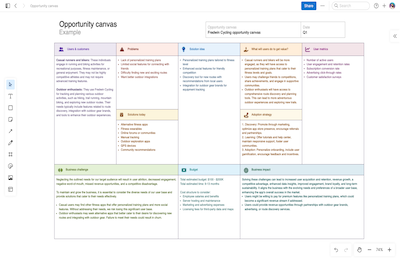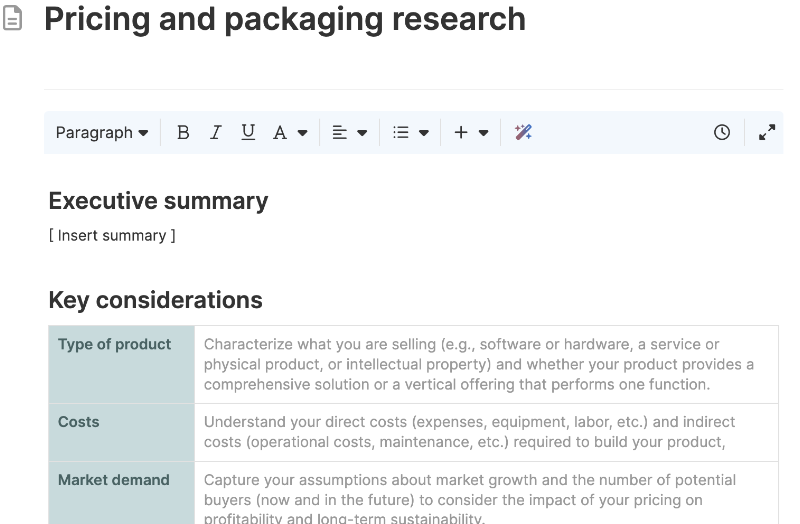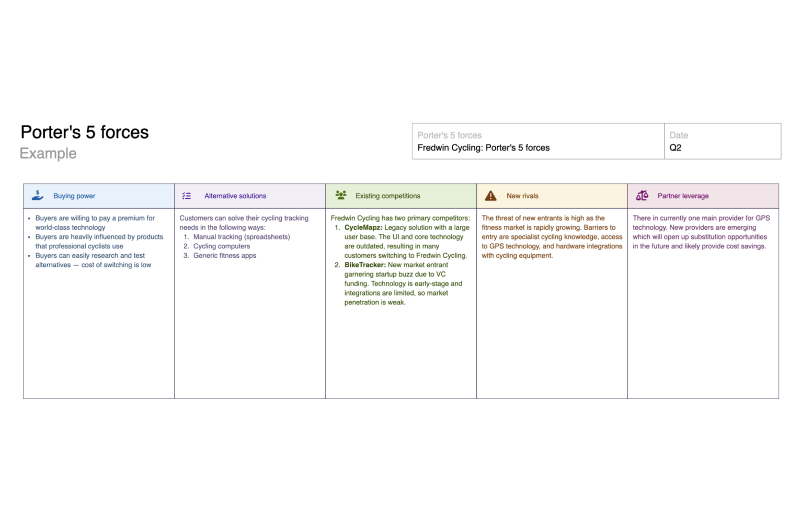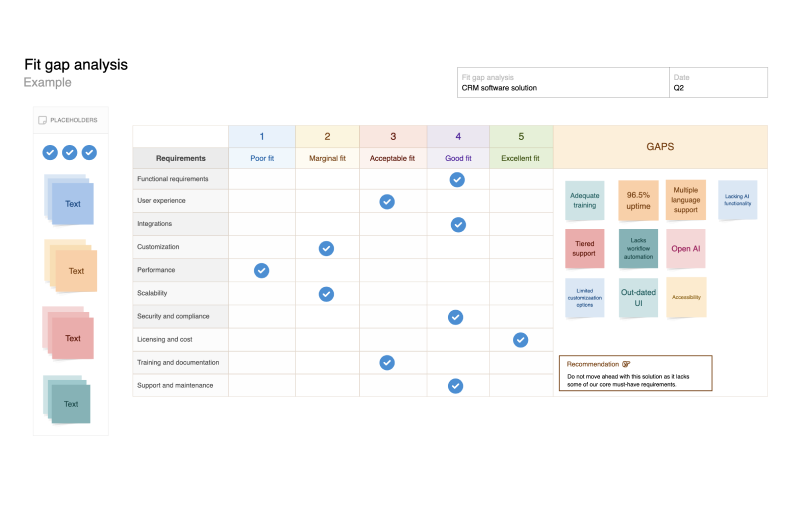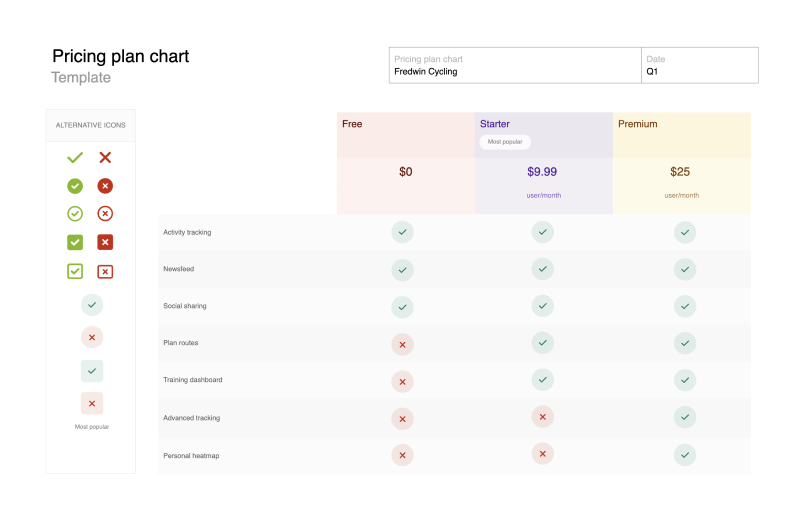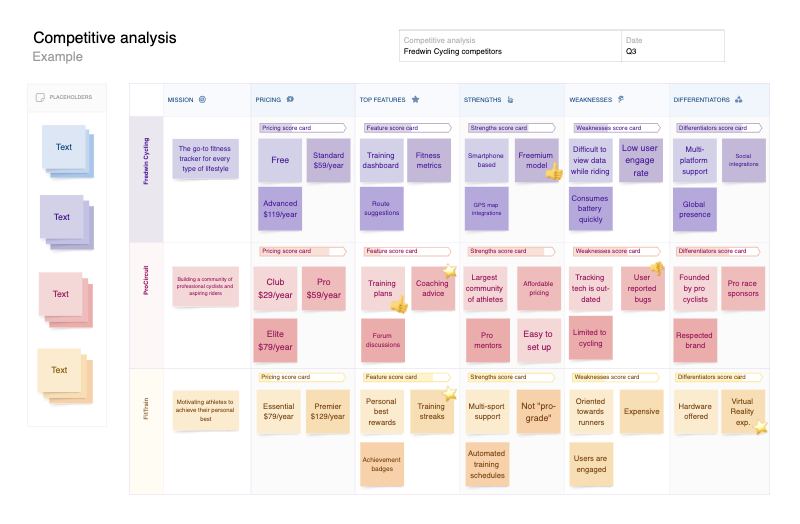Product comparison chart template
Compare competing products side by side to inform strategic decisions
Use template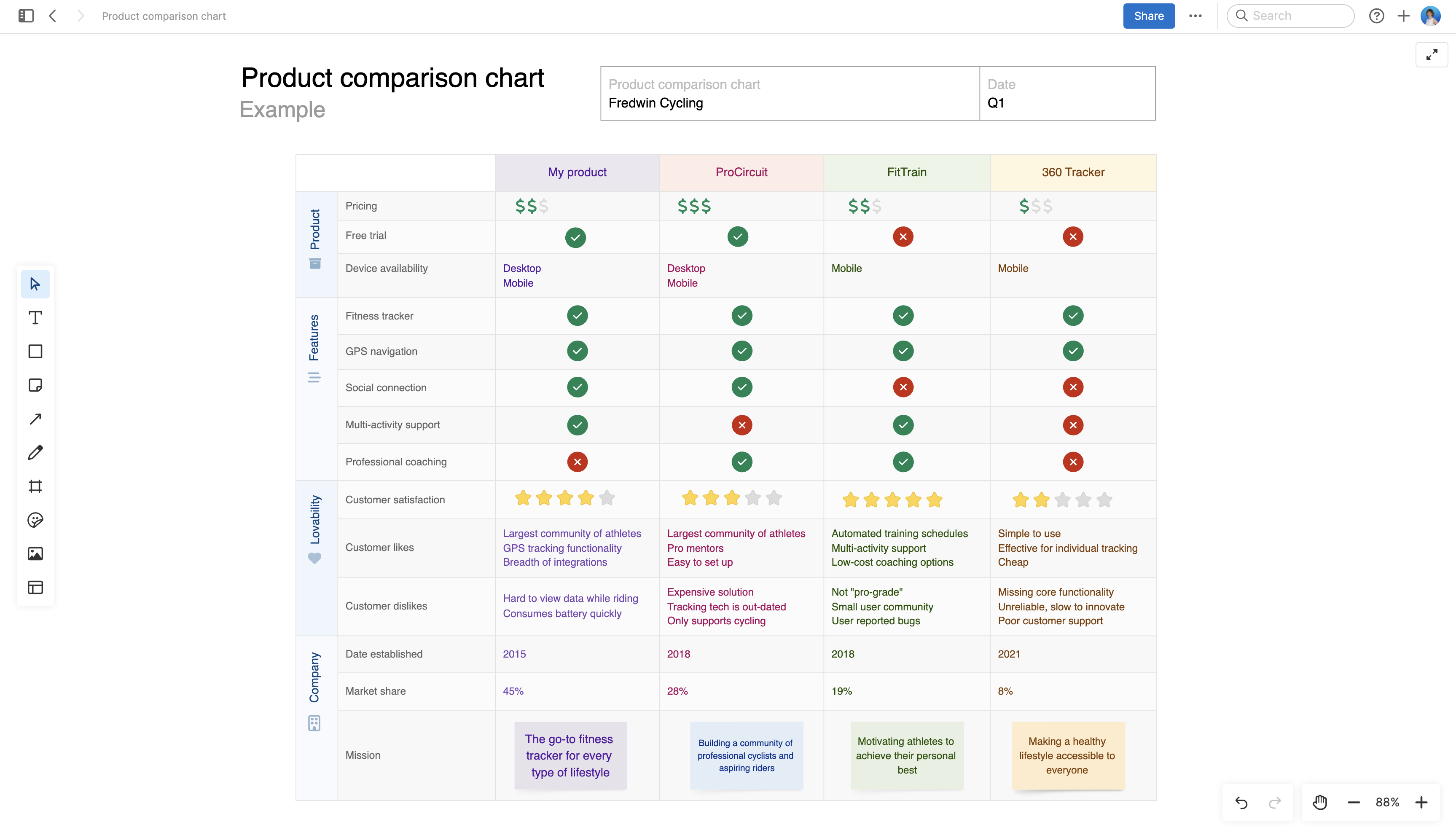
About the product comparison chart template
When customers have options, product teams need a clear view of the competitive landscape. This template helps you assess how your offering compares — across features, pricing, customer sentiment, and more. Fill in competitor names across the top and key attributes along the left side. Then, use check marks, symbols, or concise notes to capture differences. You can also add color or icons to spotlight gaps and advantages. Use this side-by-side view to identify areas to improve, reinforce your positioning, and support strategic planning.
Included in the product comparison chart template
This product comparison chart template includes built-in capabilities such as:
A structured layout for comparing features, pricing, and other product attributes
Pre-formatted column headers and row labels to guide your analysis
Classic whiteboard tools (including shapes, sticky notes, and emojis)
Inline comments to gather feedback, questions, and ideas from teammates
How to use the product comparison chart template
Use this comparison chart to analyze how your product compares to alternatives based on what matters most to your customers. It works well for evaluating market fit, identifying gaps in your offering, and supporting go-to-market decisions.
Start by choosing a few direct competitors. Add their names across the top. Then, list the most important attributes down the left, such as pricing models, feature sets, or customer support options.
Use short phrases or symbols to highlight how each product performs. Sticky notes are useful for explaining nuances — like plan restrictions or integrations. You can also add color to call out where your product leads or falls behind.
Once your chart is complete, publish it as a webpage to support sales conversations or share internally with cross-functional teams. If you use Aha! Ideas, you can also add the chart to your ideas portal as a custom page.
Best practices
Guide competitive conversations and shape meaningful product decisions.
Start with what customers compare: Choose attributes that actually influence decisions — things like feature depth, pricing clarity, and support availability
Draw on direct insight: Sales and support teams know where competitors win. Pull in those details to make your chart as accurate as possible.
Map gaps to urgency: Not every weakness needs fixing. Flag only the ones that block adoption or threaten retention — move on from the rest.
Revise when deals are lost: Update the chart whenever you learn something new from a sales call or churn interview
FAQs about the product comparison chart template
Why is a product comparison chart useful?
It forces clarity. You can see where your product stands, where competitors are gaining ground, and where differentiation is slipping. That is essential input for positioning, roadmap planning, and sales enablement.
What are some best practices for doing product comparisons?
Start by focusing on what customers care most about: key features, pricing models, or support options. Use real-world feedback from the sales and support teams to highlight meaningful differences. And be honest in your assessment. A fair comparison earns more trust than a biased one.
Who is this product comparison chart template for?
This template is ideal for product managers, marketers, and sales enablement teams. Use it to align your internal strategy, support go-to-market planning, or create content that helps prospects choose the right solution for their needs.
Is this template free to use?
Yes. To use this product comparison chart template, sign up for a free 30-day trial of Aha! Whiteboards. (You can also try this template in Aha! Roadmaps if you need a complete product management solution.) Easily customize the template to suit your needs, then share it with as many people as you want (for free) to streamline collaboration.
